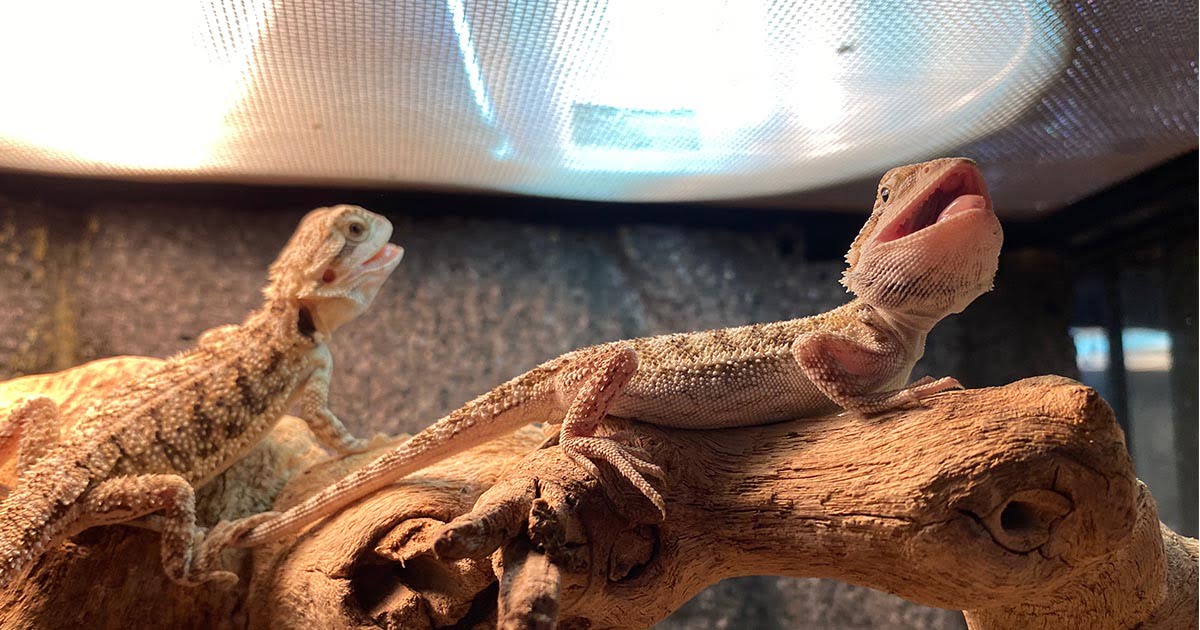
It’s common knowledge that reptiles need UVB light to survive, but what does a UVB light do for reptiles exactly? This important light source provides one of three types of UV wavelengths that plays a direct role in the physical health of reptiles and amphibians. It’s important that owners of cold-blooded pets know the purpose of UVB bulbs for reptiles as well as how to use them.
What is a Reptile UVB Light?
UVB lighting is an ultraviolet light with a wavelength between 260 and 320 nanometers. This is the light that causes sunburn. What makes it so important is that the light that falls within this part of the ultraviolet spectrum can be used as a substitute for natural light’s vitamin D producing properties. Just as vitamin D works in humans, this nutrient helps the body absorb calcium. This vitamin is an important part of raising a healthy reptile and preventing metabolic bone disease.
UVB light is especially crucial in the upkeep of diurnal reptiles (reptiles that are active during the day and sleep at night). Their bodies are designed for high levels of ultraviolet exposure and vitamin D3. However, this can be difficult to maintain in an indoor habitat.
Choosing the Correct Reptile UVB Bulb
While all cold-blooded reptiles need UVB light to help regulate body temperature, it’s not as simple as just installing one. There are different strengths of UVB bulbs reptile owners must choose from, 5.0, 10.0, and 15.0. These translate to different amounts of UVB light. The one best for your reptile will depend on the species as well as their place of origin. Desert-dwelling reptiles require higher wattages of UVB bulbs. However, those from tropical or otherwise tree-covered habitats will thrive with lower UVB percentages.
When to use 5.0 bulbs:
Use the low-intensity bulb to replicate the partial shade that forest-dwelling creatures are accustomed to. The 5.0 bulb is ideal for water dragons, certain species of chameleons, caiman lizards, and blue-tongue skinks, as well as some tortoises. These reptiles don’t like a lot of light.
When to use 10.0 bulbs:
This medium to high-intensity bulb is perfect for use when housing species that are normally found in grasslands and low tree cover areas. Use it with reptiles like bearded dragons, certain types of chameleons, tegus, savannah monitors, and iguanas.
When to use 15.0 bulbs:
The highest intensity UVB bulbs are ideal for desert-dwelling reptiles. Use 15.0 bulbs for most species of bearded dragons and tortoises are accustomed to basking in bright light.
How to Use UVB Bulbs & Lamps Properly
- Turn the UVB bulb on and off to emulate a night and day cycle. A general time frame is to alternate every 12 hours. Note, your reptile pet will still need a heat source even when this UVB bulb is off for light-providing purposes.
- Ultraviolet waves are powerful but easily blocked by materials. These include clothing, chemical barriers, glass, and even plastic. To ensure that your pet gets enough of these helpful rays, UVB bulbs should have direct exposure to your pet’s enclosure. Use a mesh or screen cover and place the bulb 12 to 18 inches away from the animal.
- UVB bulbs lose their intensity over time. Replace them every 6-8 months. Even if the bulb still turns on without issue, the strength may not be enough to fulfill your reptiles’ vitamin D needs.
Once reptile owners know what does a UVB light does for reptiles, consider looking into UVA and UVC lights. These don’t contribute directly to nutritional health, however. Instead, they help regulate behavior and circadian rhythms. Reptile owners should also note that UVB is purely a light wave and does not produce heat on its own. While there are certain types of UVB setups that are both a light and heat source, the purchase of a reptile UVB bulb will require separate purchase of a heat lamp as well.

 Wishlist
Wishlist
 Login
Login